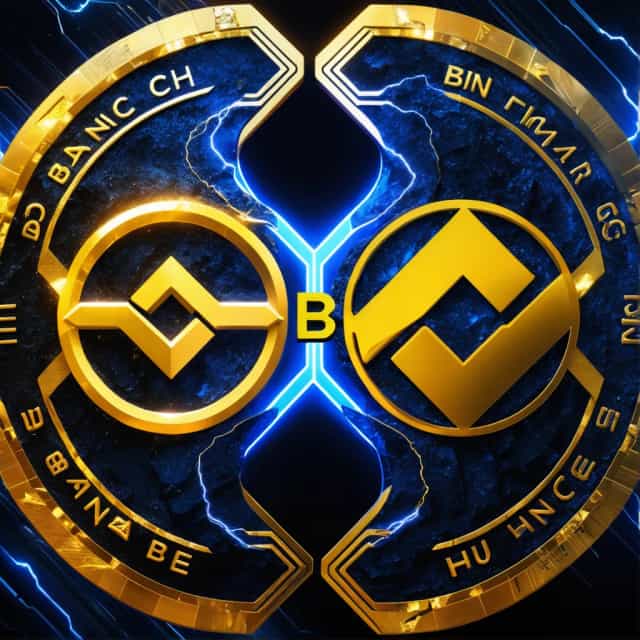
출처: Block Media
Global Corporations Re-enter Blockchain with a Renewed Focus on Business Applications
Institutional Blockchain Adoption Moves Toward Practicality
The resurgence of global corporations in blockchain adoption marks a departure from the speculative frenzy of past years, such as the NFT hype in 2021. The narrative has shifted significantly; companies are now prioritizing practical business applications over mere buzz. This transition is supported by the gradual emergence of clearer regulatory frameworks, like ETF approvals, the EU’s Markets in Crypto-Assets (MiCA) implementation, and the FIT21 legislation in the U.S. These developments eliminate much of the uncertainty that previously hindered institutional adoption.
Real-world applications of blockchain technology are rapidly gaining traction, particularly within the stablecoin market, which surpassed Visa and Mastercard’s combined transactional volume by processing $27.6 trillion in transactions in 2024—underscoring its real-world utility far beyond speculative markets. Financial powerhouses such as JP Morgan, Goldman Sachs, and BlackRock are making calculated moves into blockchain by carefully aligning their strategies with concrete business outcomes.
Key areas of institutional success include Real-World Asset (RWA) tokenization, cross-border payments, and remittance solutions. These applications are underpinned by a systematic implementation framework, ensuring projects address business needs effectively and scale efficiently.
Strategic Framework for Blockchain Implementation
Institutions seeking to adopt blockchain technology must follow a deliberate and structured roadmap to ensure their investments deliver tangible benefits. The process involves five core steps:
-
Validating Business Cases
The first step is determining whether blockchain technology is essential to solving a specific problem, rather than adopting it based on trends or hype. Core use cases such as RWA tokenization, cross-border transactions, gaming ecosystems, loyalty initiatives, and intellectual property management are emerging as dominant areas where blockchain provides distinct advantages. -
Capability Assessment
Blockchain technology introduces complexities far beyond conventional IT systems. Smart contract development, for example, requires expertise in programming languages like Solidity. Additionally, blockchain’s immutability demands robust organizational literacy to mitigate potential risks associated with data permanence. Conducting internal capability audits helps institutions decide whether to train existing staff, outsource responsibilities, or hire specialized professionals. -
Blockchain Selection
The choice of blockchain platform significantly impacts an institution’s scalability, efficiency, and overall success. Decision-makers must assess platforms across five critical dimensions:
- Finality: Ensuring transactions reach irreversible settlement rapidly.
- Developer Ecosystem: Access to robust technical support and a vibrant community.
- Proven Case Studies: Established success stories, such as adoption by Fortune 500 firms.
- Security Protocols: Compliance with international standards like ISO 27001 and resilient consensus mechanisms.
- Cost Structure: Transparent, predictable pricing that minimizes risks from network congestion.
Avalanche has emerged as a standout option due to its modular architecture and sub-second transaction finality. The blockchain's unique multi-chain design supports diverse industrial use cases, from financial tokenization to cross-border remittances.
-
Gradual Implementation
Launching blockchain solutions incrementally—through minimum viable products (MVPs)—allows institutions to mitigate deployment risks. Early-phase rollout ensures robust testing under real-world conditions, refining functionality and stakeholder alignment along the way. -
Ecosystem Integration and Scaling
Blockchain adoption’s ultimate success rests on seamless integration within existing systems. By merging blockchain with enterprise solutions, institutions can enhance transparency, streamline operations, and facilitate cross-industry collaboration—all while ensuring scalability.
Clear Regulatory Pathways Boost Institutional Confidence
One of the most significant enablers of institutional blockchain adoption in 2025 is regulatory clarity. With frameworks like MiCA in Europe and FIT21 in the U.S. now firmly in place, corporations have a clear foundation for compliance and policy alignment, reducing uncertainty around blockchain projects. Strategic guidelines surrounding cryptocurrency reserves and comprehensive policymaking have further set the stage for rapid institutional engagement.
This newfound maturity has propelled key blockchain applications, particularly in the stablecoin and RWA tokenization sectors. Stablecoins have emerged as critical instruments in financial systems, with transaction volumes surpassing traditional payment networks like Visa and Mastercard. BlackRock’s BUIDL fund serves as an excellent example, amassing $2.9 billion in just six months—a testament to the confidence inspired by regulatory certainty.
Renewed emphasis on sustainability, scalability, and tangible applications, coupled with the elimination of previous ambiguities, is driving institutions to revise and strengthen their blockchain strategies.
Lessons from the Past: Moving Beyond NFT Speculation
Reflecting on the NFT boom of 2020–2021, corporate enthusiasm at the time centered on speculative market potential rather than long-term solutions. Companies like Nike and Adidas saw impressive short-term gains—Nike alone generated $185 million from NFTs. However, unchecked proliferation and unclear business models led to unsustainable ventures. Regulatory blindspots and high-profile crashes, such as FTX and Terra-Luna, further exposed the vulnerabilities of this market-driven growth.
The lessons from this era have shaped the current approach to blockchain adoption. Institutions now favor thoughtful, methodical integration rather than indiscriminate experimentation. Payment efficiencies, tokenized real-world assets, and optimized resource allocation are becoming the hallmarks of blockchain’s institutional application today.
Why Avalanche Is Emerging as the Blockchain Partner of Choice
Institutional adoption requires platforms capable of addressing scalability, customization, and integration challenges—areas where Avalanche thrives. Its modular design features three specialized chains:
- The P-Chain for governance and blockchain management.
- The C-Chain for smart contract execution.
- The X-Chain for asset exchanges.
This architecture offers institutions flexibility while eliminating congestion issues typical of single-chain blockchains. Avalanche’s solutions have seen adoption across sectors like finance, gaming, and international payments, exemplified by RWA tokenization ventures led by KKR, municipal stablecoin initiatives, and Wyoming’s state-backed blockchain applications.
Moreover, Ava Labs’ “Avalanche Cloud” provides businesses with accessible, low-code tools to create customized blockchain networks, simplifying adoption—a model reminiscent of AWS’s enterprise-grade offerings.
Institutional Blockchain Success Hinges on Strategic Precision
Blockchain adoption has transitioned from speculative beginnings to its current, application-driven phase, where institutions must navigate opportunities carefully. Clear regulations, proven scalable platforms like Avalanche, and successful case studies present a unique opportunity for corporations to unlock blockchain’s true potential. The institutions that fail to act risk falling behind competitors actively leveraging blockchain for operational differentiation. Strategic precision in adoption, coupled with insight-driven implementation, will define the success of corporations in the evolving blockchain landscape.










